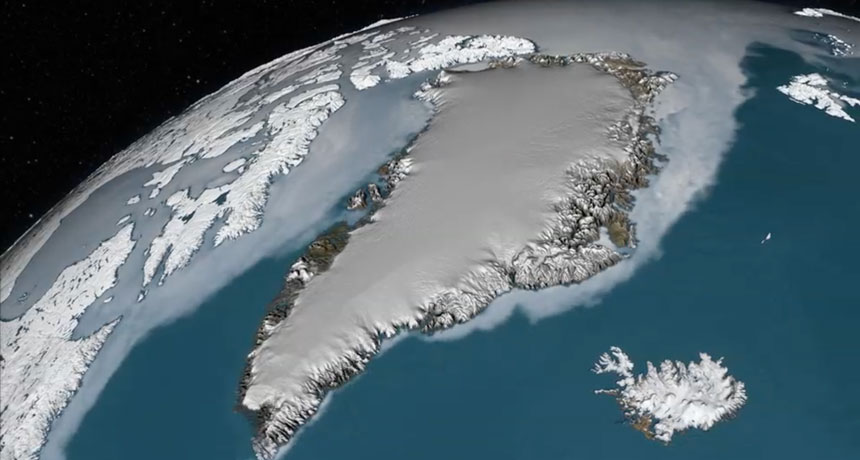Greenland may have another massive crater hiding under its ice
It’s near a giant depression found last year, but the two probably aren’t related

BURIED SECRETS Greenland’s vast ice sheet (illustrated) may hide at least two large impact craters. A new study describes a possible crater spanning more than 36 kilometers across.
NASA's Scientific Visualization Studio